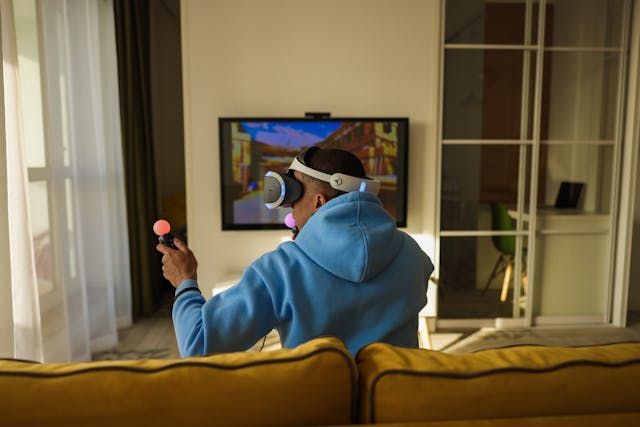Virtual reality (VR) development has become increasingly popular, with tools like Unity 2022.3 and Oculus Link enabling developers to create immersive experiences. However, many users encounter a frustrating issue: the constant hourglass symbol when using Oculus Link on Windows 11. This problem disrupts workflows and hampers productivity, making understanding its causes and solutions essential.
This article will explore the reasons behind this issue, provide step-by-step troubleshooting methods, and offer tips to optimize your VR development setup.
Understanding the Constant Hourglass Issue
The constant hourglass issue occurs when the Oculus Link fails to establish a stable connection with Unity 2022.3 on Windows 11. This results in a persistent loading screen, preventing users from accessing VR content smoothly. Common symptoms include:
- Delayed loading times
- Frequent disconnections
- Reduced performance in VR applications
Causes of the Issue
Several factors contribute to this problem, including:
- Outdated Drivers: Incompatible or outdated graphics and Oculus drivers can cause performance bottlenecks.
- Unity Project Settings: Incorrect configurations in Unity 2022.3 may lead to compatibility issues.
- Windows 11 Updates: Certain updates can introduce bugs affecting Oculus Link performance.
- USB Connection Quality: Poor-quality cables or ports can disrupt data transfer.
- System Resource Constraints: Insufficient CPU, GPU, or RAM resources can hinder VR performance.
Troubleshooting the Constant Hourglass Issue
To resolve the constant hourglass problem, follow these step-by-step troubleshooting methods:
1: Update Drivers and Software
Ensure that all drivers and software are up to date:
- Update your graphics card drivers from the manufacturer’s website (e.g., NVIDIA, AMD, or Intel).
- Install the latest Oculus software updates.
- Check for Unity 2022.3 updates and apply any available patches.
2: Verify Unity Project Settings
Incorrect project settings in Unity can cause compatibility issues. To optimize settings:
- Go to Edit > Project Settings > Player and ensure the correct VR SDK is selected.
- Adjust the rendering settings to match your hardware capabilities.
3: Manage Windows Updates
Windows 11 updates can sometimes conflict with Oculus Link. To address this:
- Check for pending updates and install them.
- If the issue persists, consider rolling back recent updates that may have caused the problem.
4: Optimize USB Connections
The quality of your USB connection plays a crucial role in VR performance:
- Use a high-quality USB 3.0 cable.
- Connect directly to a USB port on your PC, avoiding hubs or extenders.
- Test different ports to identify potential hardware issues.
5: Reboot and Reconnect
Sometimes, a simple reboot can resolve connectivity issues:
- Restart your PC and Oculus headset.
- Reconnect the Oculus Link cable and launch Unity 2022.3.
Advanced Solutions for Persistent Issues
If the problem persists despite basic troubleshooting, consider these advanced solutions:
Adjust Performance Settings
Optimize your PC’s performance by:
- Turning off unnecessary background applications.
- Adjusting power settings to prioritize performance.
Reconfigure USB Power Settings
Prevent USB power-saving features from interfering with Oculus Link:
- Go to Device Manager > Universal Serial Bus Controllers and turn off power-saving options.
Check for Software Conflicts
Conflicts with other software can cause the hourglass issue. To identify and resolve disputes:
- Use the Task Manager to monitor resource usage.
- Temporarily turn off antivirus or firewall software to test compatibility.
Upgrade Hardware
If your system lacks the necessary resources for VR development, consider upgrading:
- Invest in a high-performance GPU and additional RAM.
- Ensure your CPU meets the recommended specifications for Unity 2022.3 and Oculus Link.
Preventing Future Hourglass Issues
To avoid encountering the constant hourglass problem in the future, follow these best practices:
- Regularly update all drivers and software.
- Monitor system performance and address resource constraints promptly.
- Use high-quality hardware, including cables and USB ports.
- Stay informed about Unity and Oculus updates to ensure compatibility.
Conclusion
The constant hourglass issue in Unity 2022.3 with Oculus Link on Windows 11 can be a significant obstacle for VR developers and users. Understanding its causes and following the troubleshooting steps outlined in this article can resolve the problem and optimize your VR development setup. Regular maintenance, updates, and hardware checks ensure a seamless experience.
With these solutions, you can focus on creating immersive VR experiences without interruptions. Let RarefiedTech.com and other resources guide you in overcoming challenges and achieving your development goals.
Frequently Asked Questions
What causes the constant hourglass issue in Unity 2022.3 with Oculus Link?
Outdated drivers, incorrect settings, and system resource constraints are common causes.
How can I update my Oculus drivers?
Download the latest drivers from the official Oculus website and follow the installation instructions.
What USB cable should I use for Oculus Link?
Use a high-quality USB 3.0 cable for optimal performance.
Can Windows 11 updates affect Oculus Link?
Yes, specific updates can introduce compatibility issues. Check for updates or roll back recent changes if needed.
How do I optimize Unity 2022.3 for VR development?
Adjust project settings and rendering options, and ensure the correct VR SDK is selected.
What hardware upgrades can improve VR performance?
Upgrading your GPU, RAM, and CPU can enhance performance.
Is antivirus software a potential cause of the hourglass issue?
Yes, antivirus or firewall software can conflict with Oculus Link. Temporarily disable them to test compatibility.
How can I prevent future hourglass issues?
Regularly update drivers, monitor system performance, and use high-quality hardware.






